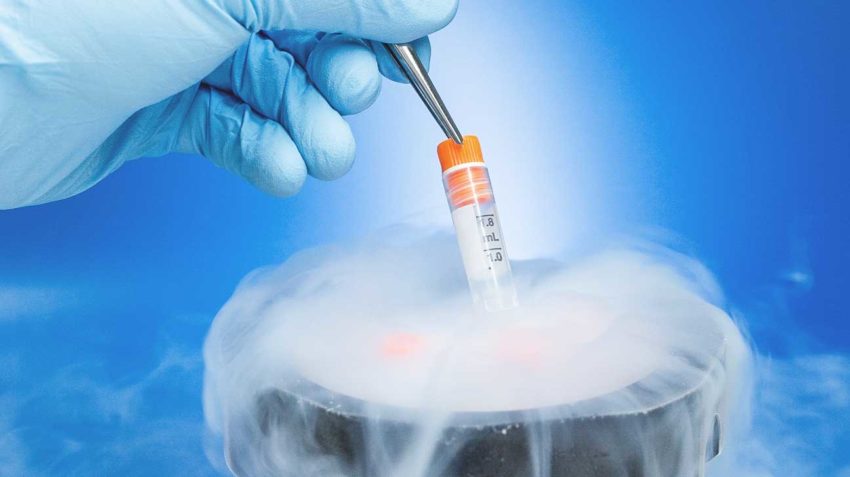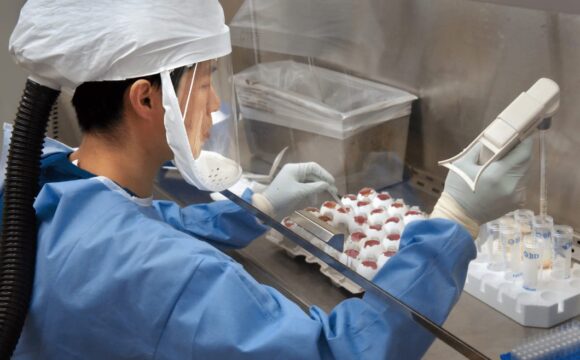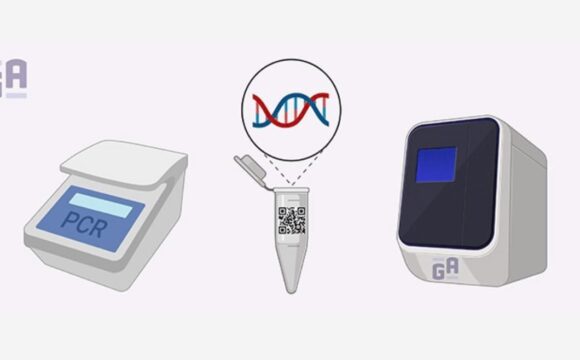Cryopreservation is the technique used for preserving biological material by storing them at extremely low temperatures to temporarily suspend all chemical/biological activity. Early scientists and fiction-writers were extremely fascinated by this concept. Several imaginative theories about cryopreserving human life to extend the normal life span cropped up. But there was a catch in the concept, freezing to extremely low temperatures is extremely toxic to biological systems. Since our cells are mainly made of water, reducing the temperature would lead to ice crystal formation in the cells and these damage cellular membranes and organelles by piercing them. Another roadblock was the precipitation of the dissolved solutes. In the year 1948, in an accidental discovery, C. Polge, A.U. Smith and A.S. Parkes revealed that glycerol could prevent the formation of ice crystals in the cells during cryopreservation. Biological materials could now be frozen for extended periods with low toxicity and high viability.
Currently, cryopreservation finds a wide application in the freezing of cell lines. Before we get into how cell lines are cryopreserved, let us try to understand why we do it at all. Most cell lines are extremely fast-growing and if they are not routinely sub-cultured, they tend to overcrowd and die of lack of nutrition and air. Also, such cultures require continuous monitoring because of their high susceptibility to microbial contamination. Given such conditions, it would be prudent to not handle too many cultures at a time and to preserve a few batches for future use. With the advancements in the field of cryogenics (the study of the behavior of materials at exceedingly low temperatures), it is now common for laboratories to freeze cell lines at low temperatures of -80°C and -196°C and revive them only when the need arises.
The cryopreservation of cell lines can be divided into 5 major steps.
The first step in cryopreservation is the Preparation of the cell lines. Even with the addition of preservation agents, freezing can be harmful to the cells. Hence, it is important to ensure that the right cell concentrations are frozen to account for the inevitable loss of a few cells to toxicity. Usually, cells in their logarithmic phase of growth are chosen for freezing as these have maximum viability and the fastest growth rate. Once the cell lines are chosen and prepared, they must be gently harvested from the culture vessel.
The next step is the Addition of Cryoprotectants. The commonly used cryoprotectants are Dimethyl sulfoxide (DMSO) and Glycerol. The role of these chemicals is twofold – first, they replace the intracellular water, thus solving the problem of ice crystal formation and prevents dehydration of the cells, and secondly, they also prevent the degradation of intracellular protein structures. This step is extremely crucial and the selection of the right concentration of cryoprotectants is important as at high doses, these chemicals are themselves very harmful to the cells.
Once the cryoprotectant is added and the cells are allowed to equilibrate themselves to the chemicals, they must be transferred to cryovials. Cryovials are special containers designed for the cryopreservation of cell lines. These vials can withstand extremely low temperatures and prevents contamination.
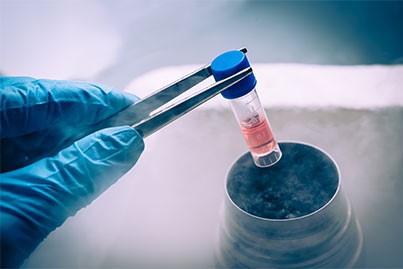
Now comes the actual Cooling Process. This step, if done properly can prevent the formation of ice crystals and subsequently increase the viability of the cells. Cooling is usually done at a controlled rate of -1°C per minute. Before they are actually stored in the deep freezers, they are gradually exposed to lower temperatures without putting them under sudden cold stress.
The equilibrated and cooled cell lines are now ready to be shifted to the deep freezers. For short term preservation of cell lines, they are stored in -80°C freezers. Cell lines remain frozen but viable in this condition for a few years. But eventually, cells lose their viability because of minor chemical reactions that cannot be stopped at -80°C. If one wishes to completely suspend all biological activity, temperatures lower than -130°C need to be attained. The Liquid Nitrogen freezers maintain temperatures as low as – 196°C and this provides the ideal environment for the long-term cryopreservation of cell lines. If a steady supply of liquid nitrogen is provided to the freezer, the cells remain in their state of suspended activity for more than 50 years.
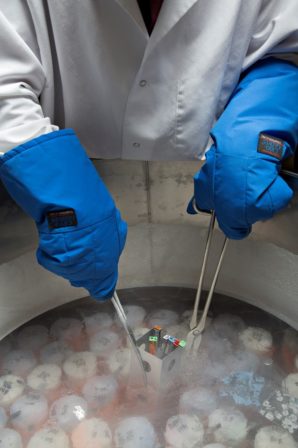
(Source: https://www.mcrh.com/treatments-success/ivf/cryopreservation)
Cryopreservation has now become an advanced technique and finds application in several fields of medicine. Oocytes, sperm, and embryos are routinely frozen as a part of IVF procedures. Stem cell therapy has also found new avenues with the help of cryopreservation. Stem cells from individuals can be preserved for up to 25 years and can be revived when the need for therapy arises. It also finds application in the restoration of endangered species by the preservation of sperm and oocytes.
Cryopreservation has come a long way from being a fantasy in the mind of scientists to being a means of preserving valuable cells for research and medicinal purposes. But there is still a long way to go in discovering new means to improve the viability of the cells revived after cryopreservation. Scientists are working on the potential use of different cryoprotectants with reduced toxicity to cells and new freezing methods to ensure extended cell viability.
References:
- https://www.scienceabc.com/innovation/cryogenics-applications-cryogenics.html
- https://www.ncbi.nlm.nih.gov/pubmed/18080474
- https://www.ncbi.nlm.nih.gov/pubmed/18080461
- https://www.thieme-connect.com/products/ejournals/pdf/10.1055/s-2002-23515.pdf
- https://www.ncbi.nlm.nih.gov/pubmed/18080474
- https://opsdiagnostics.com/notes/ranpri/rpcryoprescell.htm



